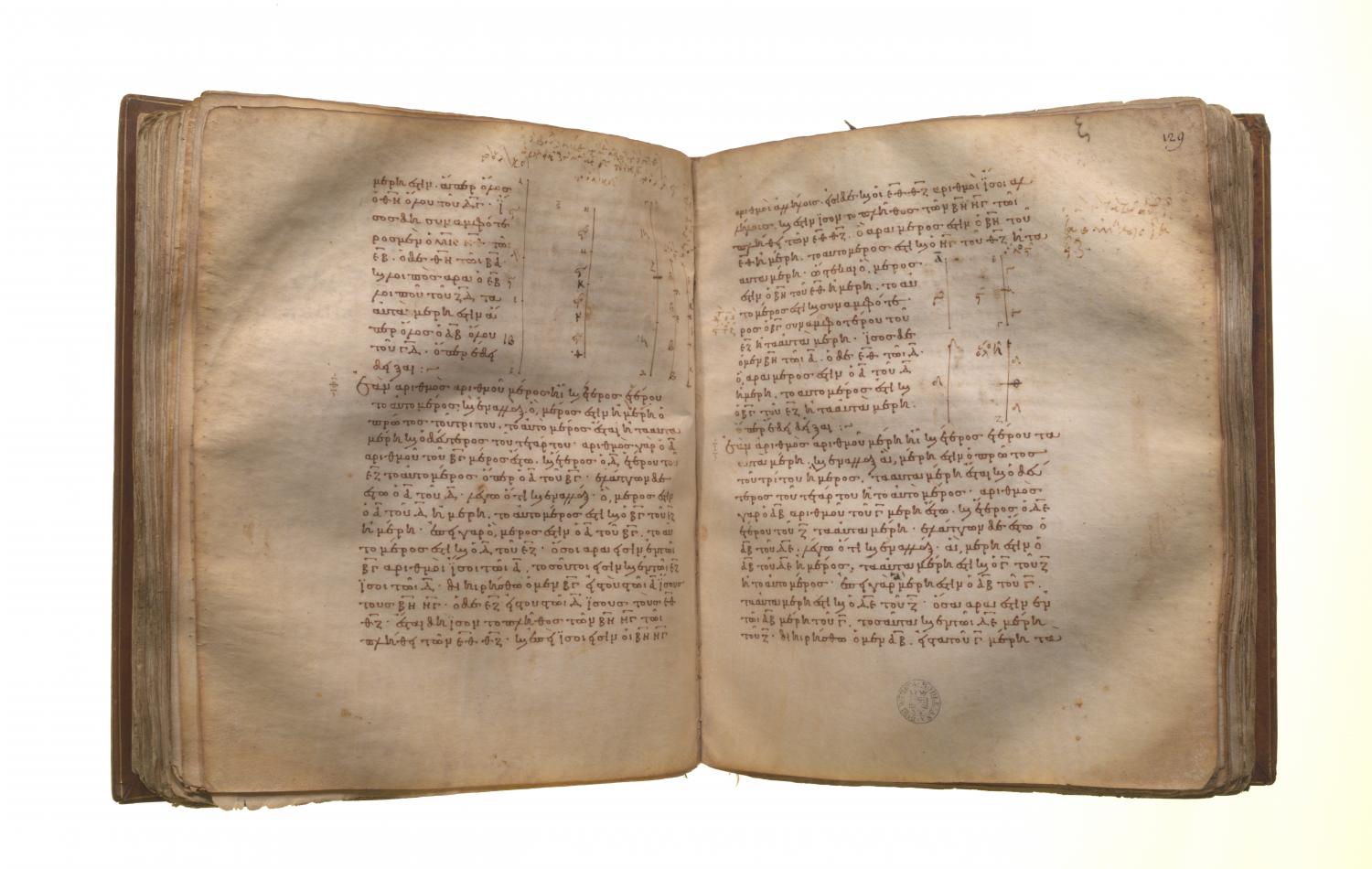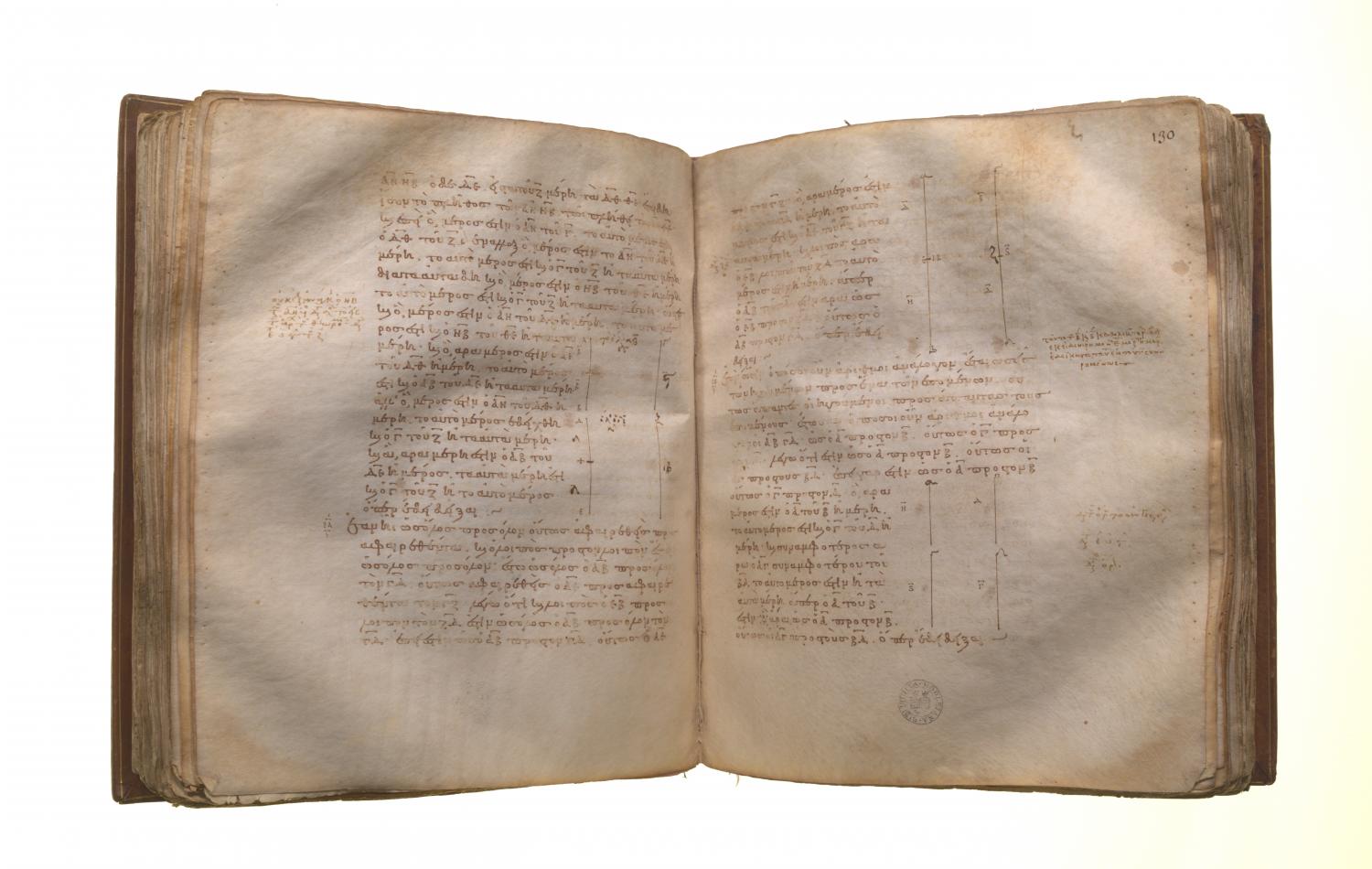Ἐὰν ἀριθμὸς ἀριθμοῦ μέρη ᾖ, καὶ ἕτερος ἑτέρου τὰ αὐτὰ μέρη ᾖ, καὶ ἐναλλάξ, ἃ μέρη ἐστὶν ὁ πρῶτος τοῦ τρίτου ἢ μέρος, τὰ αὐτὰ μέρη ἔσται καὶ ὁ δεύτερος τοῦ τετάρτου ἢ τὸ αὐτὸ μέρος. Ἀριθμὸς γὰρ ὁ ΑΒ ἀριθμοῦ τοῦ Γ μέρη ἔστω, καὶ ἕτερος ὁ ΔΕ ἑτέρου τοῦ Ζ τὰ αὐτὰ μέρη: λέγω, ὅτι καὶ ἐναλλάξ, ἃ μέρη ἐστὶν ὁ ΑΒ τοῦ ΔΕ ἢ μέρος, τὰ αὐτὰ μέρη ἐστὶ καὶ ὁ Γ τοῦ Ζ ἢ τὸ αὐτὸ μέρος. Ἐπεὶ γάρ, ἃ μέρη ἐστὶν ὁ ΑΒ τοῦ Γ, τὰ αὐτὰ μέρη ἐστὶ καὶ ὁ ΔΕ τοῦ Ζ, ὅσα ἄρα ἐστὶν ἐν τῷ ΑΒ μέρη τοῦ Γ, τοσαῦτα καὶ ἐν τῷ ΔΕ μέρη τοῦ Ζ. διῃρήσθω ὁ μὲν ΑΒ εἰς τὰ τοῦ Γ μέρη τὰ ΑΗ, ΗΒ, ὁ δὲ ΔΕ εἰς τὰ τοῦ Ζ μέρη τὰ ΔΘ, ΘΕ: ἔσται δὴ ἴσον τὸ πλῆθος τῶν ΑΗ, ΗΒ τῷ πλήθει τῶν ΔΘ, ΘΕ. καὶ ἐπεί, ὃ μέρος ἐστὶν ὁ ΑΗ τοῦ Γ, τὸ αὐτὸ μέρος ἐστὶ καὶ ὁ ΔΘ τοῦ Ζ, καὶ ἐναλλάξ, ὃ μέρος ἐστὶν ὁ ΑΗ τοῦ ΔΘ ἢ μέρη, τὸ αὐτὸ μέρος ἐστὶ καὶ ὁ Γ τοῦ Ζ ἢ τὰ αὐτὰ μέρη. διὰ τὰ αὐτὰ δὴ καί, ὃ μέρος ἐστὶν ὁ ΗΒ τοῦ ΘΕ ἢ μέρη, τὸ αὐτὸ μέρος ἐστὶ καὶ ὁ Γ τοῦ Ζ ἢ τὰ αὐτὰ μέρη: ὥστε καί [ὃ μέρος ἐστὶν ὁ ΑΗ τοῦ ΔΘ ἢ μέρη, τὸ αὐτὸ μέρος ἐστὶ καὶ ὁ ΗΒ τοῦ ΘΕ ἢ τὰ αὐτὰ μέρη: καὶ ὃ ἄρα μέρος ἐστὶν ὁ ΑΗ τοῦ ΔΘ ἢ μέρη, τὸ αὐτὸ μέρος ἐστὶ καὶ ὁ ΑΒ τοῦ ΔΕ ἢ τὰ αὐτὰ μέρη: ἀλλ' ὃ μέρος ἐστὶν ὁ ΑΗ τοῦ ΔΘ ἢ μέρη, τὸ αὐτὸ μέρος ἐδείχθη καὶ ὁ Γ τοῦ Ζ ἢ τὰ αὐτὰ μέρη, καὶ] ἃ [ἄρα] μέρη ἐστὶν ὁ ΑΒ τοῦ ΔΕ ἢ μέρος, τὰ αὐτὰ μέρη ἐστὶ καὶ ὁ Γ τοῦ Ζ ἢ τὸ αὐτὸ μέρος: ὅπερ ἔδει δεῖξαι.
If a number be parts of a number, and another be the same parts of another, alternately also, whatever parts or part the first is of the third, the same parts or the same part will the second also be of the fourth. For let the number AB be parts of the number C, and another, DE, the same parts of another, F; I say that, alternately also, whatever parts or part AB is of DE, the same parts or the same part is C of F also. For since, whatever parts AB is of C, the same parts also is DE of F, therefore, as many parts of C as there are in AB, so many parts also of F are there in DE. Let AB be divided into the parts of C, namely AG, GB, and DE into the parts of F, namely DH, HE; thus the multitude of AG, GB will be equal to the multitude of DH, HE. Now since, whatever part AG is of C, the same part also is DH of F, alternately also, whatever part or parts AG is of DH, the same part or the same parts is C of F also. [VII. 9]

